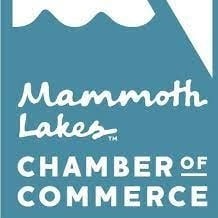 Several weeks ago a reported “bus accident” caused a multi-agency emergency response to the Agnew Meadow area above Mammoth Lakes. Arriving emergency service responders quickly determined it was not an “emergency,” just a bus that had run off onto the roadway shoulder. However, the incident did raise a question regarding the weight of buses in the local area. On Saturday, July 5, 2004, the California Highway Patrol (CHP) conducted unscheduled roadside inspections of four local buses on State Route 203 (Minaret Road), west of Mammoth Scenic Loop, between 9:35 A.M. and 11:57 A.M.
Several weeks ago a reported “bus accident” caused a multi-agency emergency response to the Agnew Meadow area above Mammoth Lakes. Arriving emergency service responders quickly determined it was not an “emergency,” just a bus that had run off onto the roadway shoulder. However, the incident did raise a question regarding the weight of buses in the local area. On Saturday, July 5, 2004, the California Highway Patrol (CHP) conducted unscheduled roadside inspections of four local buses on State Route 203 (Minaret Road), west of Mammoth Scenic Loop, between 9:35 A.M. and 11:57 A.M.
Two of the inspected buses were operated by Mammoth Mountain, and two buses were registered to Eastern Sierra Transit Authority. One bus fully loaded with passengers and one unloaded bus from each company was inspected. Inspections included overall vehicle weight, axle weight, vehicle lights, brakes, vehicle documents and driver documents. The inspections were performed by a CHP officer specifically trained and equipped to conduct these types of inspections. Three of four buses did not have any violations. One bus required approximately six of its passengers to be repositioned due to a weight violation before the bus continued.
These six passengers were quickly repositioned and the bus was on its way. No citations were issued and no enforcement action was taken. Lieutenant R. D. Cohan, Commander of the CHP’s Bridgeport Area, said “I want to thank both Eastern Sierra Transit Authority and Mammoth Mountain for their professionalism during the four inspections conducted this morning. I realize this weekend is the busiest weekend of the summer; the exact reason today was selected for these brief inspections. When a commercial vehicle’s weight becomes a question, it needs to be weighed when loaded to maximum capacity. We look forward to a continuing dialogue regarding safe and legal transportation that meets the needs of Mammoth Lakes and Mono County.”
Discover more from Sierra Wave: Eastern Sierra News - The Community's News
Subscribe to get the latest posts sent to your email.

















Nobody really cares about the tourists as people. The local businesses only care about how much money they can milk from each one. Tourists are seen as shmoos to be treated nicely until they gush money.
http://en.wikipedia.org/wiki/Shmoo
The error of that strategy is that people get it. They know when they are being stroked. If the town just made itself as nice as possible — for the people who live here — without trying to attract people with events and amenities, people would come here just to be in a better environment than their home town. Second home owners might even make their second home their first home.
The people who live here would be happier. And that would be felt in and out of the business community. People (tourists) get it. They aren’t stupid. And if all the people in town only sees people as a source of money — people are going to shy away — like they are now as evidenced by the continually diminishing occupancy rate and sales tax revenue.
The business community needs to rethink the whole relationship between them and the people.
I guess no one cares about tourists pretty sad .unfortunately that’s what keeps our economy going with you we’d like it or not.
Big brother is always watching! =
I heard Bishop now requires permits for all lawn mowers and Bishop P.D. would be inspecting lawn mowers and handing out citations for unsafe lawn mowers.
Permits are $20 annually and are sold only after proof of passing inspection is provided.
To make an appointment to have your lawn mower inspected call the Bishop P.D.
One more example of people being pulled over in the name of public safety. What’s next on their hit list?
As others have stated and I agree with safety.
LT Cohan needs to be aware that those were paying tourists. There needs to be a better way to conduct these surprise inspections. I do see safety as a issue. Just another way to do so.
As Far as the Axel weight issue I think we need to know what that is all about. The buses should be allowed to handle the total listed on the plaque located on the bus.
Was ESTA and the drivers aware of the loading issues prior to these inspections.
If there is a issue where the bus needs to be loaded special and it unique to these buses then I think there is a problem. Those buses I would assume are more loaded in the winter time with skiis people and equipment.
All the fat kids to the back!
Believe commercial vehicles have individual axle load, as well as overall, ratings.
Of course there are axle limits. So do these buses have live weight distribution gauges on board. If not How is the driver supposed to prevent this again?
Why all the flack. I suppose all you negative ones don’t care how we treat our tourists.
The CHP could have accomplished the same with training and education then with surprise inspections and detaining cash paying tourists.
Anyone interested in knowing more about commercial weight regulations and California Vehicle Code (CVC) sections related to a vehicle’s “Gross Vehicle Weight Rating,” also known as “GVWR” or “axle” weight limitations, the information is available at the state Department of Transportation (Caltrans) website http://www.dot.ca.gov and/or http://www.dot.ca.gov/hq/traffops/engineering/trucks/truck-weight.htm . To see the related CVC sections, go to http://www.leginfo.ca.gov, “California Law,” then “Vehicle Code” and scroll or search to Division 15 (Size, Weight, and Load) and look at Sections 35550 through 35557.
LT. Cohan
If you can help some of us understand. I am under the impression that the bus that needed to redistribute weight was not over the number of persons. If that is correct how is it that possible. These buses carry skiers in the winter which have much more weight.
How could the weight per axle have been exceeded. Was this just a issue of balance?
Certainly, MK. First, please visit the DOT website posted above in my previous post. That is easier to use than reading the California Vehicle Code. Secondly, this was the first time I have been involved weighing local buses, so I am unable to comment on the weight of a bus in the winter with skiers aboard. California is more restrictive than many states with regards to motor vehicles rules, and vehicle weight is a good example. Vehicle manufacturers, like the companies that make buses, build them to hold maximum loads, or in the case of buses, people. California has elected to set limits on both overall vehicle weight, which is referred to the “gross vehicle weight limit” or “GVWR.” Additionally, California limits the amount weight that can be carried on certain axles of the vehicle. These weight limits were established in part for safety. If a vehicle could legally, in California, weigh 80,000 pounds, you can’t have 30,000 pounds of weight on the vehicle’s front axle and 50,000 pounds on the rear axle. These weight limitations protect California roadway surfaces. The heavier a vehicle is, the more “wear and tear” that occurs to the roadway surface, the more often the roadway surface must be repaired or replaced. After a roadway surface sustains cumulative, significant damage, the roadway surface can create a hazard for other drivers. Our local area is a good example; concrete/asphalt roadways, very warm summer days, heavy vehicles braking for a stop sign or signal light, asphalt that starts looking like an old fashion “wash-board,” then winter snow and ice in the low spots of the “wash-board” making it difficult for a snow plow to remove, then a motorist trying to stop. Roadways are often constructed differently in areas where there is increased heavy truck traffic. That is one reason large, heavy trucks are generally restricted to the right lanes of a freeway. Often, the traffic lanes used by heavy trucks are reinforced with additional concrete, rebar, etc.
Lt. Cohan,
Thanks for the reply. While looking at the links you supplied those seem to be all about trucks. this link is for motorhomes.
http://www.dot.ca.gov/hq/traffops/engineering/bus-motorhome/
http://www.dot.ca.gov/hq/traffops/engineering/trucks/trucksize/weight.htm
buses are exempt from the front weight limit.
What was the issue with the overweight axle?
Was the weight over in the back or front.
Also how is a driver supposed to deal with unloading and loading at stops. Everyone is supposed to move seats. Something seem strange here, I am sure the passenger limits plaque on the buss allows for this so the bus does not have to rearrange passengers constantly.
Also is there a specific restriction for the road down to devils postpile regarding weight?
Thanks
MK, here is another useful DOT (Caltrans) link for anyone with a vehicle over 45 feet:
http://www.dot.ca.gov/hq/traffops/engineering/bus-motorhome/bus-maps/busmap-d09.pdf
“Transit buses,” by definition, are currently exempt from weight limitations WHEN they meet all of the requirements detailed in Assembly Bill (AB) 1706 (www.leginfo.ca.gov). AB 1706 will sunset December 31, 2014, returning us to a 20,500 maximum axle weight for all buses, unless legislative action is taken.
Length, weight and other legal requirements often contain statutory exceptions….truck/trailer combinations transporting automobiles and trucks hauling bailed hay are both allowed to slightly exceed the maximum vehicle length when loaded, logging trucks are provided a weight “variance” (allowable overage) when loaded, a truck transporting poultry is not considered to be “littering” if feathers are coming off live birds….if the poultry is deceased and feathers are coming from the truck, then the truck’s driver is “littering,” etc., etc.
Please feel free to telephone me at the CHP’s Bridgeport Area office and I would be happy to provide you with more information regarding AB 1706, answer any other California Vehicle Code questions you have, or provide you information on CHP enforcement policies.
CHP Lt. Ron Cohan responded to the comment on bus inspections:
The first post on the bus inspection story expressed concerns regarding inconvenience to visitors:
Inspections of the four busses, of which only two contained passengers, took between 9 and 18 minutes. The 18 minute inspection took that long because passengers had to be repositioned to correct an axle weight violation. If a bus operator/driver would ever be tempted to compromise a little bit on the safety rules, it might be on a day that was as busy as July 5th. For that reason, I selected the morning of Saturday, July 5th, and since I knew it was a busy weekend, we only inspected four buses, we did not stop any bus and make it wait for an inspection, we first stopped and inspected a bus operated by Mammoth Mountain and next inspected a bus from Eastern Sierra Transit Authority, etc., and we only performed inspections for two and one-half hours. I completely understand very few (if any) people are happy to see a regulatory agency show up to do an inspection….…especially on a busy day, however passenger safety is a concern of mine 365 days a year. I do my best to be reasonable about it.
Thank you, Benett. Please give me a call if you have any questions.
R. D. Cohan, Lieutenant
Commander
CHP, Bridgeport Area
Tourists might just be appreciative that someone was looking out for them. Too many bus accidents on the news that nobody wants to be a part of. Thanks CHP!!
Yea right! Our tourists , are you kidding. They are all about me me me and me too.
It is tough out there to please them, but they are what keeps Mammoth going. We have no choice in the matter. If it were not for them the place would be a ghost town.
That is the reality.
A ghost town would be ok with me. The lakes would be cleaner. The trails in better shape. Fewer dogs crapping all over town. Less chance of t-boning a skate border or biker. Easier to walk across the street. A ghost town sounds pretty good to me.
Really? What about when you get hungry?
A busy holiday weekend is a very good time to find out if bus operators are packing passengers on and running overweight equipment. A non-holiday week day might not find violations and sloopy operating procedures won’t be identified and corrected.
Anyone know which bus the Mammoth bike bus or the reds meadow bus had to redistribute weight?
Also How long were the tourists detained?
I appreciate safety and inspections, but on the fourth of July weekend. CHOW could have found a better way to do this that wasting vacationers time and money. If it was not for tourists there would be no busses to inspect. CHE really needs to re think their safety operations. An amusement park inspector would not perform inspections like this on paying customers.